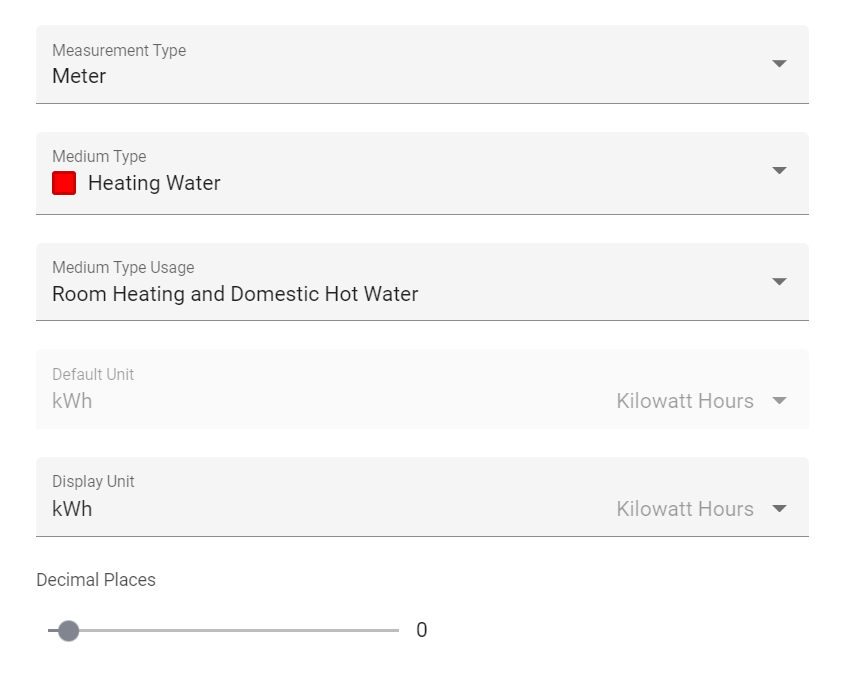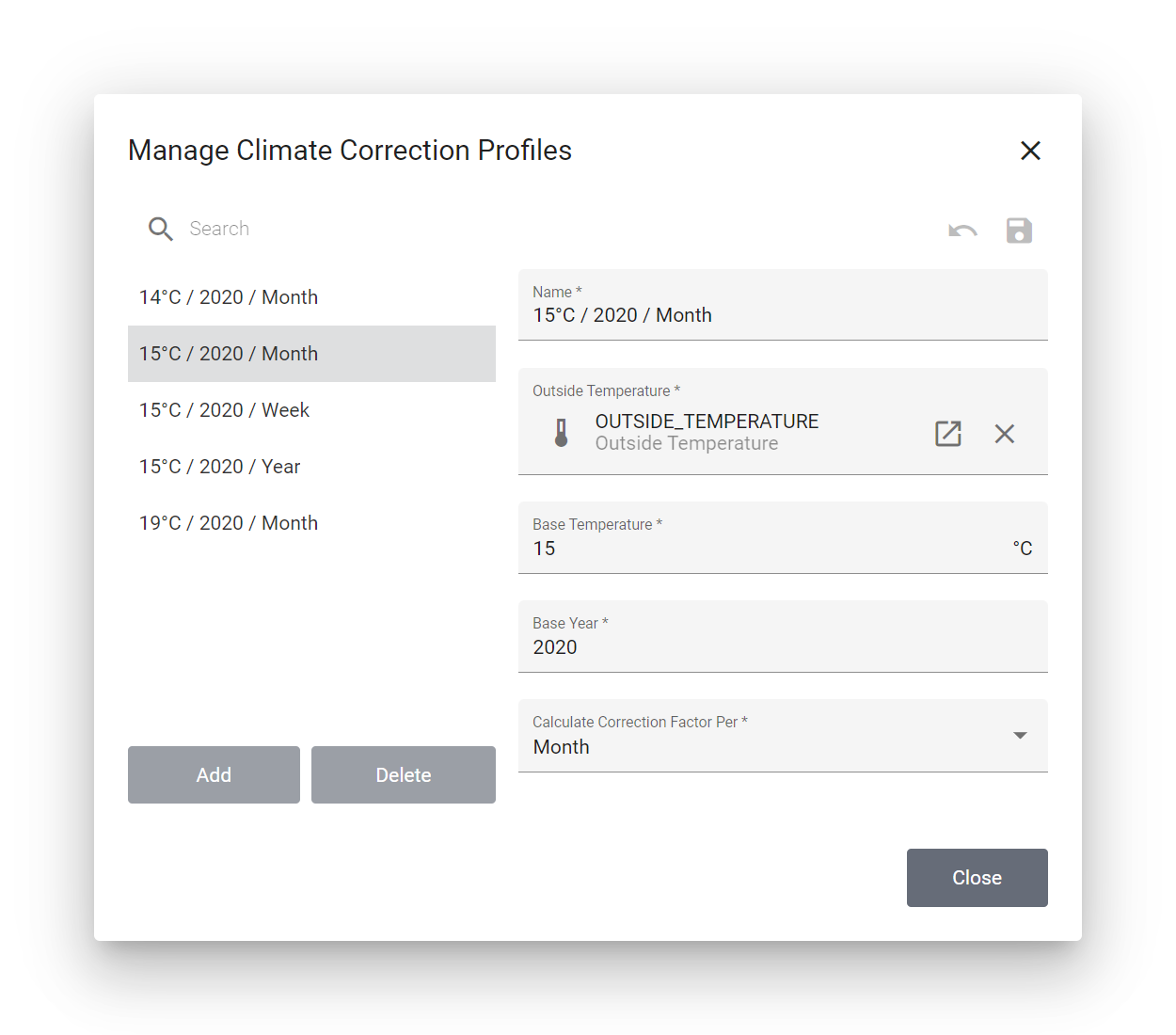Climate correction
Introduction
Heating energy consumption is influenced by different climatic conditions from year to year.
In order to compare the heating energy consumption of different years or different locations, the energy consumption must be climate-corrected. For this purpose, the degree days of a reference period are put into relation to the current period, and a climate correction factor is determined.
Avelon can automatically perform climate correction on a data point, provided that this data point is configured correctly and a data point providing measurements of the outside temperature is available.
The feature is currently integrated in the Measurement chart and the Chart with aggregation function.
Set up data point
Before climate correction can be applied, go to the data point of your energy consumption and configure it as follows:
- Data Type
Climate correction only works for data points of type Energy.
- Measurement Type
Must be set to one of the following:
Meter
Consumption
- Medium Type
Must be set to one of the following:
Electric
District Heating
Heating Water
Gas
Oil
- Medium Type Usage
Must be set to one of the following:
Room Heating
Room Heating and Domestic Hot Water

Climate correction profile
Create profile
To perform a climate correction, you first need to define a climate correction profile.
Open a Measurement chart or a Chart with aggregation function (or create a new one).
Drag the energy data point that you configured in the previous section from the data point sidebar to your chart configuration to create a plot.
Select the new plot.
In the plot settings, set Primary Data Function to Sum.
Scroll down to the section Climate Correction and open it. If a warning is displayed, please check your data point configuration according to the previous section, and refresh the current page by pressing
F5.Next to the Climate Correction Profile dropdown, click on Configure Climate Correction Profiles.
In the following dialog, click Add at the bottom left to create a new profile, then specify the following parameters on the right:
- Name
- The name of this profile.
You might want to include the base temperature, base year and calculation interval in the name to find the profile more easily later on.
Example:
Zurich 15°C / 2020 / Month
- Outside Temperature
Select a data point which provides outside temperatures in the vicinity of your building.
- Base Temperature
Define the base temperature in °C.
- Base Year
Define the base year that should be used as reference.
- Calculate Correction Factor Per
Define the period for which a correction factor should be calculated:
Year
Month
Week
Save the profile by clicking on Save.

Note
For each climate correction profile, three data points will be created in the background. These data points, together with the outside temperature data point, will be counted towards your Energy Management license.
Accumulated daily temperature difference (ATD) of the current year
Accumulated daily temperature difference (ATD) of the base year
Climate correction factor (CCF)
Assign profile to plot
Select a climate correction profile from the dropdown Climate Correction Profile.
Automatic domestic hot water calculation
If the medium usage of the data point it set to Room Heating and Domestic Hot Water, the system will calculate the domestic hot water production per day automatically. The currently selected time interval of the chart is used as the calculation interval. If this interval is shorter than 365 days, the 365 days prior to the end of the selected time period are considered. In these 365 days, at least one consumption value is required for a day where the accumulated temperature difference was zero. The domestic hot water production is the average consumption over all days in the calculation time interval where the accumulated temperature difference is zero.
If you want to set a manual value for the domestic hot water calculation, you can select the option Override calculated domestic hot water production per day with manual value and enter a value in the field Domestic Hot Water Production Per Day.
Calculation
The climate correction factor is calculated as follows:

- ATD Base Year
Accumulated base temperature difference of the base year. In the example above, the base year is set to 2015.
- ATD Current Year
Accumulated base temperature difference of the current year.